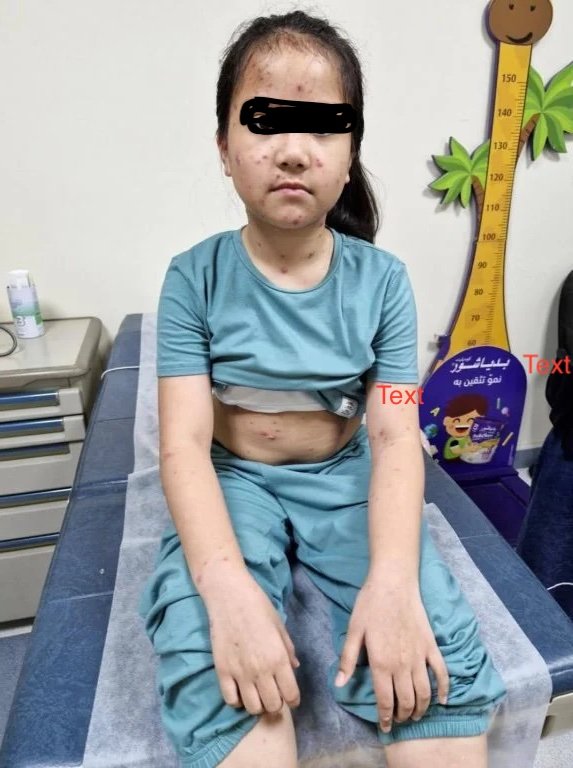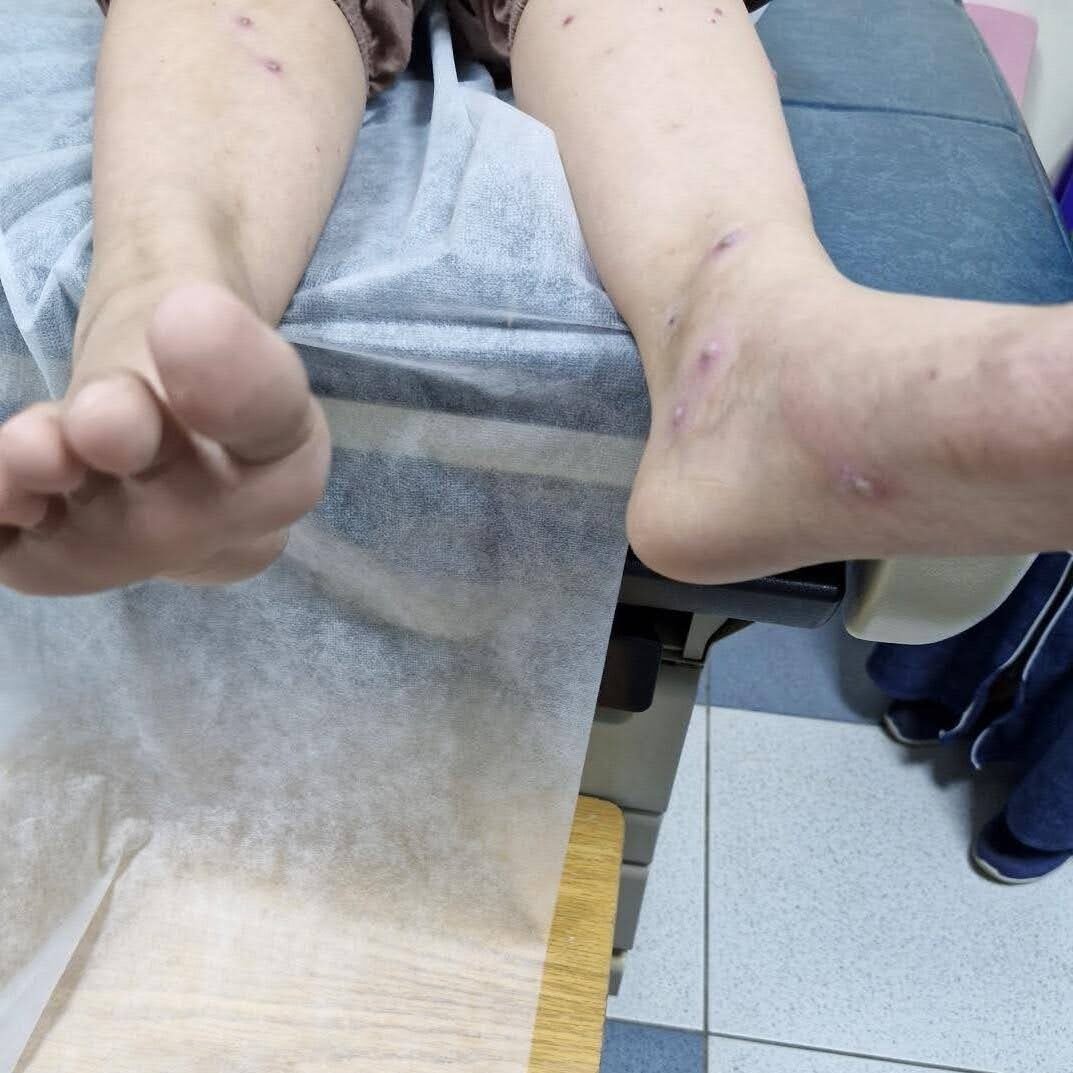A Rash Beyond the Usual: Extensive Hand, Foot and Mouth Disease in a Child
Contributed by
Dr.Ghulam Nabi, MD.
Pediatric Consultant and Neonatologist.
Bugshan Hospital Jeddah, 21432.
P.O. Box 5860, Kingdom of Saudi Arabia.
Mobile. 00966 502310661. E-mail: drgnabi2@gmail.com
A 9 year-old girl presented to our paediatric outpatient clinic with a two-day history of red spots on the face, hands, feet, trunk, and limbs, associated with mild oral pain and discomfort as shown in Fig.1 &2
There were no systemic symptoms such as fever, vomiting, or diarrhoea. On examination, her vital signs and growth parameters were within normal limits. All systemic examinations were unremarkable.
Oral examination revealed small, reddish pinhead papules and three shallow ulcers involving the oral mucosa. The skin examination demonstrated widespread maculopapular rashes on the face, limbs, hands, feet, and trunk.
No vesicles or signs of secondary infection were noted.

Based on the clinical presentation and absence of alarming features, a diagnosis of Hand, Foot and Mouth Disease (HFMD) was made. No laboratory investigations were necessary.

The child was managed conservatively with symptomatic treatment including paracetamol for pain and fever, oral soothing agents, and advice on adequate hydration. Parents were advised on general hygiene measures, isolation of the child during the contagious period, and supportive care at home. At one-week follow-up, the child showed marked clinical improvement with complete resolution of oral and cutaneous lesions.
HFMD is a common viral illness affecting mainly children under 7 years of age. It is caused most frequently by Coxsackievirus A16 or Enterovirus 71 and is transmitted via direct contact with saliva, nasal secretions, stool, blister fluid, or contaminated surfaces.
The infection typically starts with low-grade fever, malaise, and sore throat, followed by painful oral ulcers and a maculopapular or vesicular rash involving the hands, feet, and occasionally buttocks or genital area. Diagnosis is clinical, and the illness is self-limiting, typically resolving within 7–10 days.
Patients are most infectious in the first week, though viral shedding in stool can persist for several weeks. Effective transmission control requires strict hand hygiene, particularly after changing diapers, using the toilet, or handling nasal secretions.
Transmission can occur through touching the eyes, nose, or mouth after contact with contaminated hands, toys, door handles, or shared utensils. Parents were advised to offer soft, cold foods such as ice cream, smoothies, and popsicles to reduce oral discomfort, while avoiding acidic or hot foods which may worsen pain.
Although rare, complications such as dehydration or neurological involvement may occur.
Differential diagnoses include herpangina, HSV, chickenpox, Kawasaki disease, erythema multiforme, and Stevens-Johnson syndrome. This case is notable for the extent of cutaneous involvement, which was more widespread than typically observed.
Vaccines targeting EV71 have been developed and are approved for use in China. A three-dose regimen showed a protective efficacy of 94.7%, lasting up to two years. However, these vaccines are strain-specific and not yet in routine use globally.
This case highlights the importance of clinician awareness, effective parental education, and supportive management in achieving favourable outcomes in HFMD.
References:
- Wang SM, Liu CC. Update of enterovirus 71 infection: epidemiology, pathogenesis and vaccine. Expert Rev Anti Infect Ther. 2014.
- World Health Organization. A Guide to Clinical Management and Public Health Response for HFMD. WHO, 2011.
- Xu W, Liu CF, Yan L et al. Distribution of enteroviruses in hospitalized children with hand, foot and mouth disease. Virol J. 2012.
- Mao QY et al. EV71 vaccine: protection against HFMD and clinical trial results in China. Lancet. 2014.
Join the mailing list!
Get the latest articles delivered right to your inbox!









